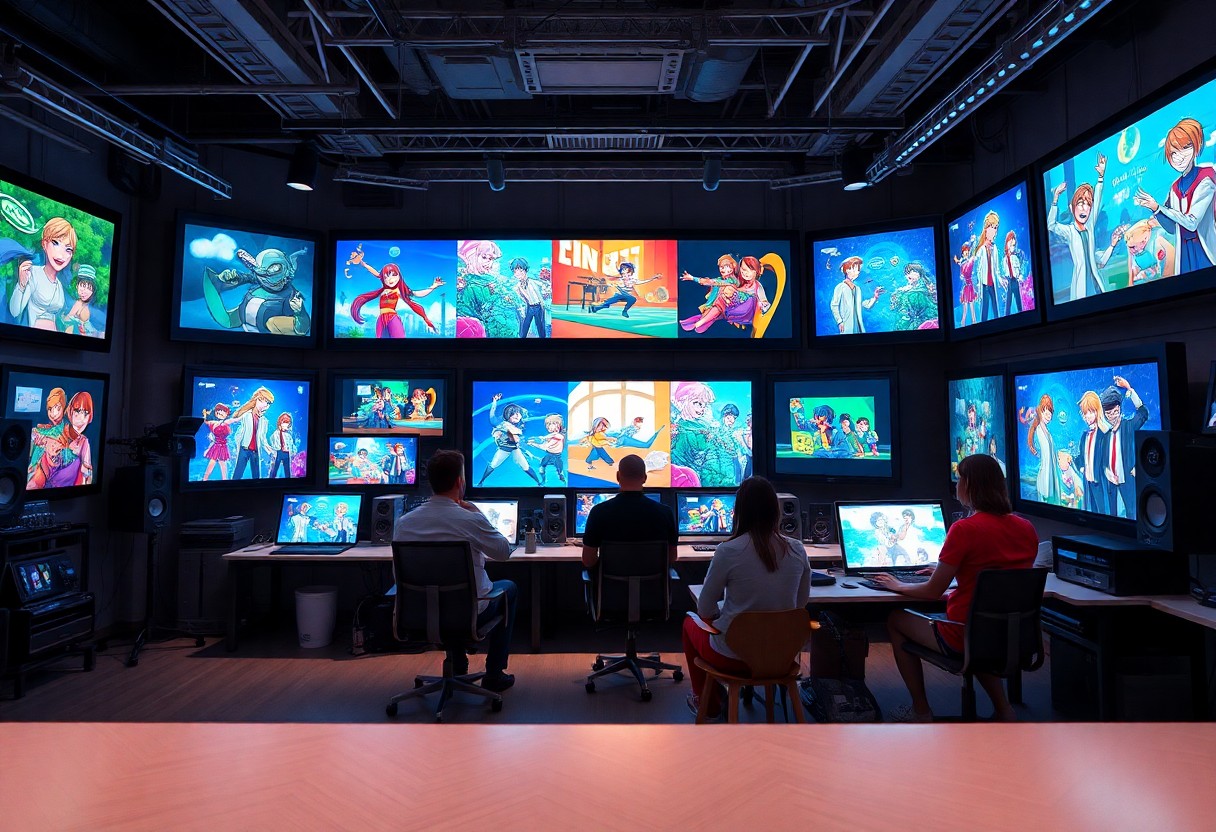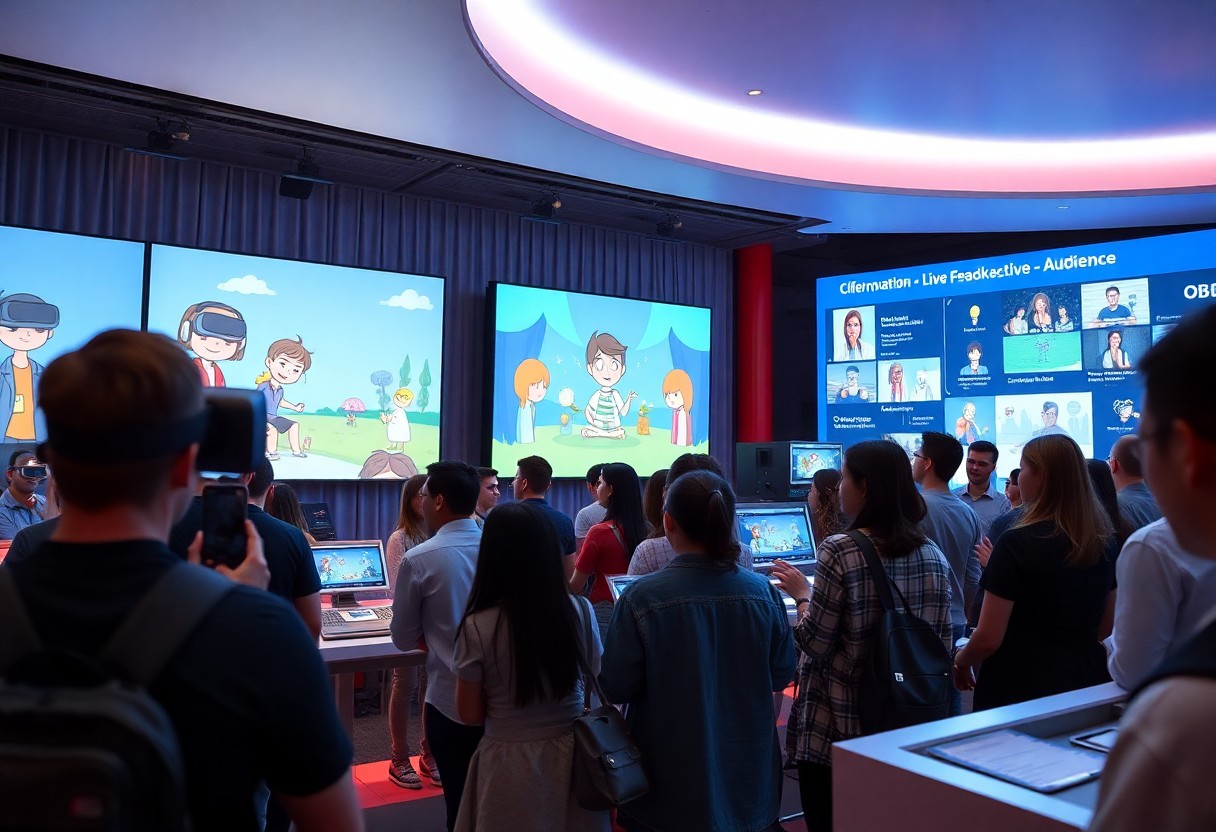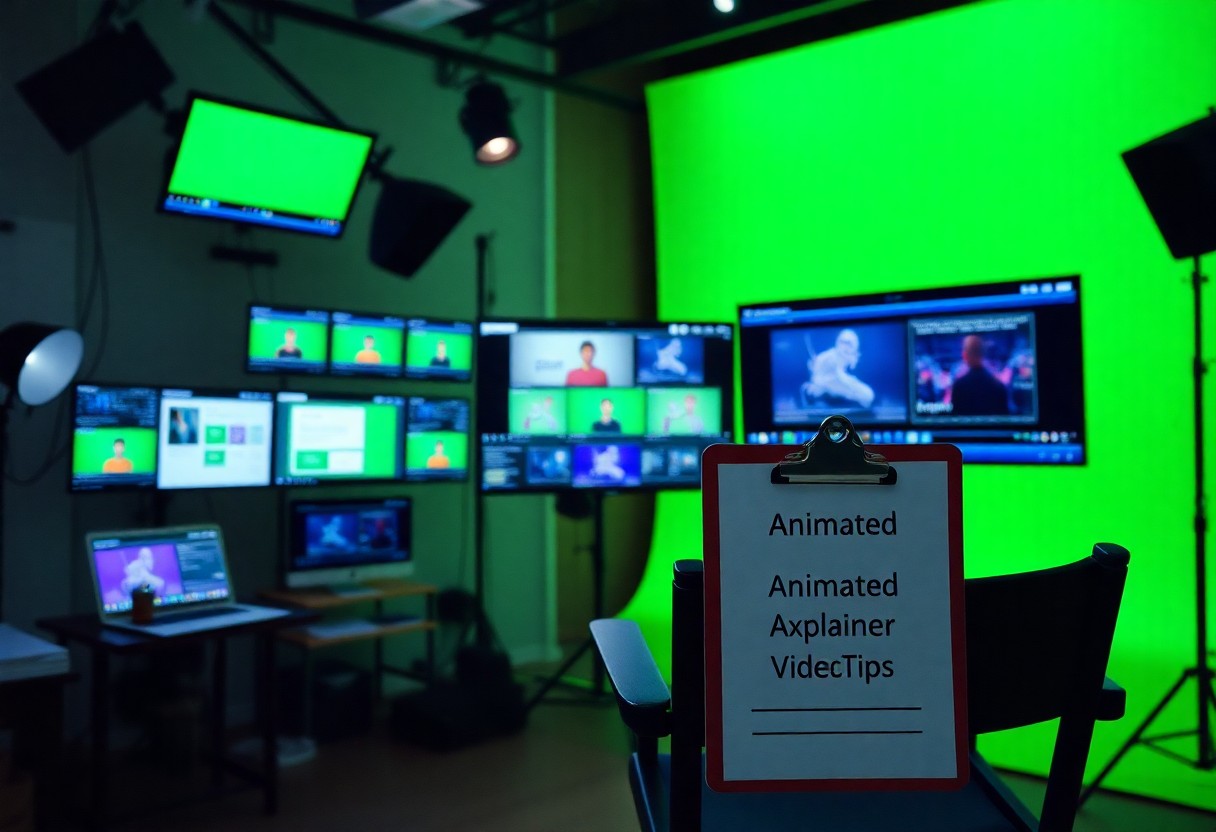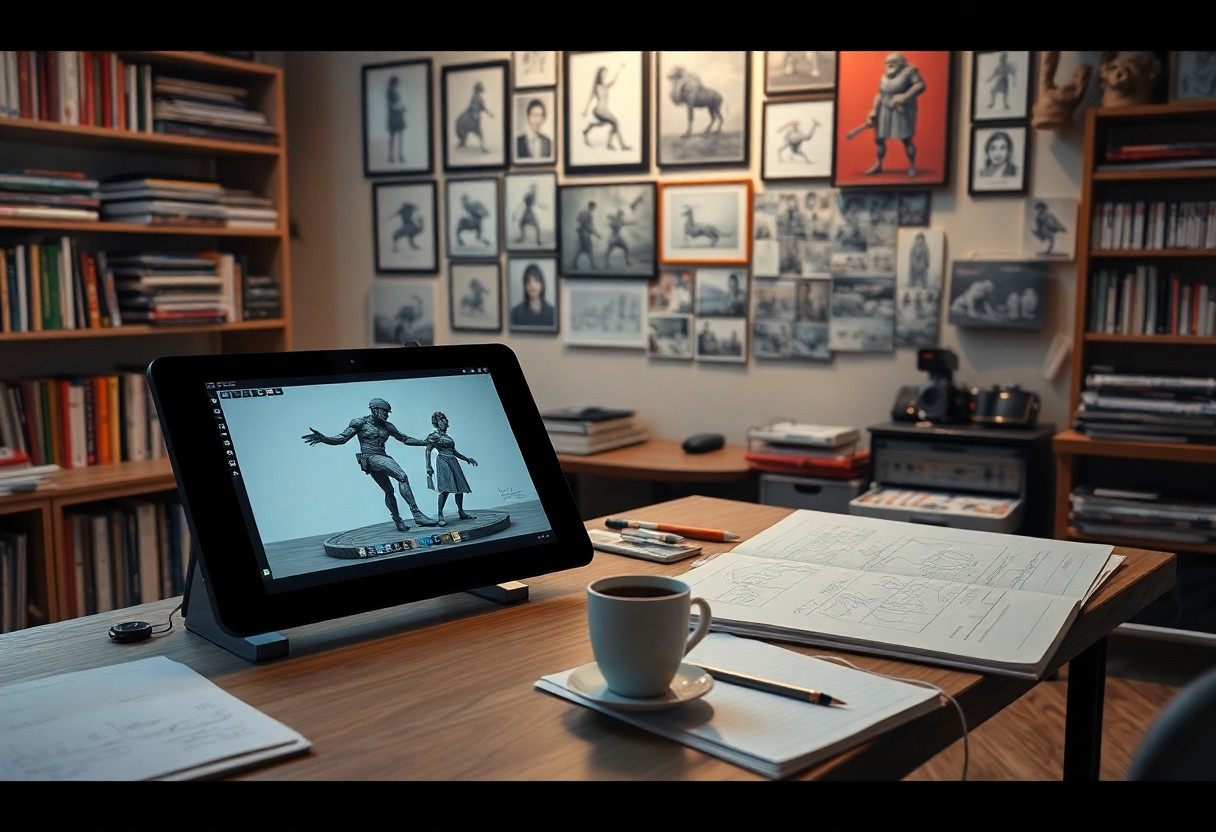
Aug 18, 2025
The Future of Animation – Trends Every Creator Should Watch in 2025
As creators, it’s imperative for you to stay ahead of the curve in the ever-evolving animation landscape. In 2025, you will see cutting-edge technologies like artificial intelligence and virtual reality transforming how we produce and experience animated content. Moreover, the rise of diverse storytelling will ensure that a broader range of voices is not only heard but celebrated. However, with these advancements come ethical challenges that require you to navigate carefully. Join me as I examine into the trends shaping the future of animation and what they mean for your creative journey.
Key Takeaways:
- Increased integration of AI tools will empower creators to enhance their workflow and streamline animation processes.
- Augmented reality (AR) and virtual reality (VR) will become more prevalent, allowing for immersive storytelling experiences that engage audiences in new ways.
- Collaborative animation platforms will gain popularity, offering creators a space to work together in real-time regardless of geographical barriers.
- Sustainability in animation production will take center stage, with a focus on eco-friendly practices and reducing carbon footprints in the industry.
- Diverse narratives and representation will continue to be a significant trend, as audiences increasingly seek content that reflects varied cultural perspectives and experiences.
The Technological Advancements Redefining Animation
Animation is undergoing a revolution thanks to groundbreaking technological advancements that are reshaping how we create and experience animated content. From AI-driven software to enhanced rendering techniques, these innovations not only streamline the production process but also expand creative possibilities that were once unimaginable. As these technologies evolve, they will redefine storytelling in animation, making it more interactive and responsive to audience input. For creators, this means plenty of opportunities to engage with their viewers on an entirely new level.
Artificial Intelligence: The Creator’s New Best Friend
AI tools are now at the forefront of animation, enabling creators to automate tedious tasks while maintaining quality and creativity. By leveraging machine learning algorithms, animators can produce realistic movements, generate character expressions, and even craft entire scenes with minimal manual input. For instance, companies like Adobe have introduced AI features in their animation software, drastically reducing production time from weeks to mere days. With AI as a collaborator, you can focus more on your artistic vision and less on repetitive tasks.
Virtual Reality: Immersive Worlds Beyond Imagination
Virtual reality (VR) in animation is making strides toward immersive experiences that transport audiences into vivid worlds. This technology allows creators to design interactive environments where viewers can actively participate in storytelling. Projects such as “The Walking Dead: Our World” exemplify how VR can blend narrative and gameplay, inviting users to step into the story. The future of animation relies on understanding and utilizing VR not just as a viewing medium, but as a tool for crafting truly engaging experiences that linger long after the credits roll.
As I explore the capabilities of virtual reality further, it’s clear how this medium is revolutionizing the way stories are told. Imagine an animated film where you, as the viewer, control the protagonist’s journey, making choices that directly influence the outcome. This interactive narrative approach not only enhances emotional engagement but also fosters a deeper connection between the creator and the audience. With platforms like Oculus and HTC Vive continually advancing their hardware and software, you should look to integrate VR elements into your projects to create compelling, dynamic experiences that captivate viewers in unprecedented ways.
The Shift Toward Sustainability in Production Practices
Creative studios are increasingly embracing sustainable practices in response to growing environmental concerns. Adopting eco-friendly methodologies, from sourcing materials to minimizing waste during production, helps not only in reducing the environmental impact but also resonates with audiences who prioritize sustainability. As we move into 2025, a noticeable shift toward greener practices will redefine how animations are conceived, produced, and distributed, pushing creators to rethink traditional methods.
Eco-Friendly Techniques Gaining Popularity
Implementing eco-friendly techniques has become a pivotal trend among animation studios. For instance, many creators are transitioning to renewable energy sources, optimizing energy use in studios, and opting for digital tools that replace the need for physical resources. Techniques like virtual production and 3D animation simplify processes, resulting in less material waste while still delivering quality content. This proactive approach not only meets audience expectations but also enhances a studio’s brand reputation.
The Role of Digital Distribution in Reducing Carbon Footprint
Digital distribution plays a significant role in lowering the overall carbon footprint of animation projects. By moving away from physical media, creators can cut down on the environmental damage associated with manufacturing, packaging, and transporting DVDs, Blu-rays, and other tangible products. Digital platforms not only make content more accessible to global audiences but also significantly reduce waste and emissions, making it easier for studios to promote their commitment to sustainability.
The advantages of digital distribution extend beyond just reduced carbon emissions; they also streamline the entire release process. By leveraging platforms like streaming services, studios can quickly reach worldwide audiences without the logistical challenges tied to traditional distribution. In 2023 alone, it was estimated that digital streaming cut CO2 emissions by approximately 1 million tons compared to physical media releases, showcasing a clear path towards a more sustainable future in animation. Overall, embracing these methods not only contributes to environmental goals but enhances your reach and visibility as a creator.
Expanding Creative Boundaries with Diverse Narratives
Diversity in storytelling isn’t just a trend; it’s a transformative movement reshaping the animation industry. As creators, you have the unique opportunity to tap into a wealth of cultural narratives that go beyond the mainstream, allowing for richer character development and more relatable plots. By exploring various backgrounds, creators not only engage a wider audience but also enrich their own creative landscapes, leading to innovative and distinct animation that resonates globally.
Representation in Animation: Amplifying Underrepresented Voices
Animation is increasingly becoming a platform for voices that were once marginalized. By bringing underrepresented cultures and perspectives into animated series and films, you can weave stories that reflect a more inclusive world. Projects like *Raya and the Last Dragon* and *Soul* showcase the importance of cultural authenticity, inspiring you to create narratives that truly connect with diverse audiences and offer fresh viewpoints.
Cross-Cultural Collaborations: A Global Animation Landscape
A new wave of cross-cultural collaborations is emerging in the animation sector, breaking geographical barriers and fusing different artistic styles. International partnerships, like those between studios in Japan and the US, are generating unique visual experiences and narratives that appeal to a global audience. Joining forces with creators from different backgrounds not only enhances your creativity but also ensures that the stories produced resonate on a deeper level.
These cross-cultural collaborations are often epitomized through projects like *The Breadwinner*, which showcases traditional Afghan art while being produced by an Irish studio. Opportunities like these widen your artistic palette, allowing you to draw inspiration from varied cultural aesthetics and storytelling techniques. By engaging with creators from different corners of the globe, you open a dialogue that fosters mutual respect and understanding, ultimately leading to more innovative and compelling animation that speaks to a diverse audience.

Audience Engagement in the Age of Personalization
In 2025, audience engagement is not just about captivating visuals; it revolves around providing personalized experiences that resonate with unique viewer preferences. The advent of advanced algorithms and AI tools enables creators to tailor content specifically for different audience segments, intensifying their connection with viewers. I see this trend pushing creators to explore deeper emotional storytelling, fostering loyalty and more robust interactions within their communities.
Interactive Storytelling: Bridging the Creator-Viewer Gap
Interactive storytelling allows viewers to influence the narrative, effectively bridging the gap between creators and audiences. With platforms facilitating user decisions within the story, I find this trend empowers viewers to become active participants rather than passive consumers. Gamified elements integrated within traditional narratives deepen emotional investment, leading to a highly engaged fan base.
The Rise of Short-Form Content in Capturing Attention
The surge in short-form content reflects an evolving digital landscape, where the average attention span is condensing. Platforms like TikTok and Instagram Reels, where videos typically last under a minute, dominate as they cater to audiences seeking quick bursts of entertainment. This demand prompts creators like me to craft concise, impactful animations that deliver engaging narratives swiftly.
Short-form content resonates with viewers because it aligns perfectly with their fast-paced lifestyles. Statistics reveal that videos under 60 seconds generate 68% more engagement than longer formats. I often utilize clever storytelling and vibrant visuals to convey emotions and messages effectively and succinctly. The trend is not just a phenomenon; it signals a shift in how stories are told and consumed, making it imperative for anyone in animation to adapt and innovate in this fast-evolving arena.
Predicting Market Trends: What’s Next for Creators?
I foresee significant shifts in the animation landscape as we head towards 2025. The rise of interactive storytelling and immersive experiences, fueled by advancements in technology, will redefine how creators engage their audiences. As creators, we must tap into trends that prioritize viewer interactivity and personalization, ultimately shaping our content to meet evolving consumer expectations.
The Growth of Streaming Platforms and Its Impact
Streaming platforms continue to dominate the market, with subscriptions soaring to over 1.5 billion worldwide. This surge is reshaping how animation is consumed, granting creators the opportunity to reach vast global audiences without traditional gatekeeping. You should consider how partnerships with these platforms can enhance visibility and offer platforms for innovative storytelling.
Monetization Strategies for Emerging Animators
As emerging animators, exploring diverse monetization avenues can significantly influence the sustainability of your projects. From crowdfunding and direct-to-consumer sales to subscription-based models and ad revenue from platforms like YouTube, the opportunities are expanding. Delving into partnerships with brands for sponsored content can also provide additional financial support as you build your audience.
These monetization strategies are not just theoretical; they reflect real-world shifts in consumer behavior and creator support. Platforms like Patreon allow you to harness direct support from fans, while merchandizing your content can convert your creative passion into revenue streams. By emphasizing community-building, you can create a loyal following willing to invest in your journey as an animator, thus doubling down on your success in a competitive landscape.
Final Words
Hence, as I envision the future of animation in 2025, I believe that staying attuned to emerging trends such as AI integration, immersive storytelling, and the rise of decentralized platforms will be necessary for your creative endeavors. By embracing these developments, you can enhance your projects and engage audiences in innovative ways. The animation landscape is evolving rapidly, and I encourage you to adapt and experiment to stay ahead of the curve. Your ability to leverage these trends will ultimately shape the success of your work in this dynamic field.
FAQ
Q: What are the main trends shaping the future of animation in 2025?
A: The main trends expected to shape the future of animation in 2025 include the rise of augmented reality (AR) and virtual reality (VR) storytelling, increased use of artificial intelligence (AI) for animation production, and a shift towards more diverse and inclusive narratives. Additionally, advances in technology will lead to more interactive and user-generated content, making animation more accessible than ever.
Q: How will artificial intelligence impact the animation industry by 2025?
A: By 2025, artificial intelligence will significantly streamline the animation production process. AI will facilitate tasks such as character design, frame creation, and lip-syncing, enabling creators to focus more on storytelling and creativity. Moreover, AI-driven analytics will help studios understand audience preferences, leading to more tailored content that resonates with viewers.
Q: Will traditional animation techniques still be relevant in 2025?
A: Yes, traditional animation techniques will continue to hold value in 2025. While digital animation and new technologies will dominate, many creators will blend traditional methods with modern techniques to create unique styles. The nostalgia and artistic quality of hand-drawn animations will appeal to audiences, ensuring these techniques remain a vital part of the animation landscape.
Q: What role will sustainability play in animation by 2025?
A: Sustainability is becoming increasingly important across creative industries, including animation. By 2025, many animation studios are expected to adopt eco-friendly practices in their production processes, such as utilizing energy-efficient technologies, reducing waste, and supporting green initiatives. This shift not only reflects a growing awareness of climate issues but also resonates with a socially conscious audience.
Q: How can new creators prepare for the future of animation?
A: New creators can prepare for the evolving landscape of animation by staying informed about emerging technologies and trends, such as VR, AR, and AI. Building a strong foundation in both traditional and digital animation techniques will be important. Additionally, engaging with diverse content and inclusive storytelling will help creators connect with a broader audience. Networking within communities and attending industry events will also provide valuable insights and opportunities for collaboration.



